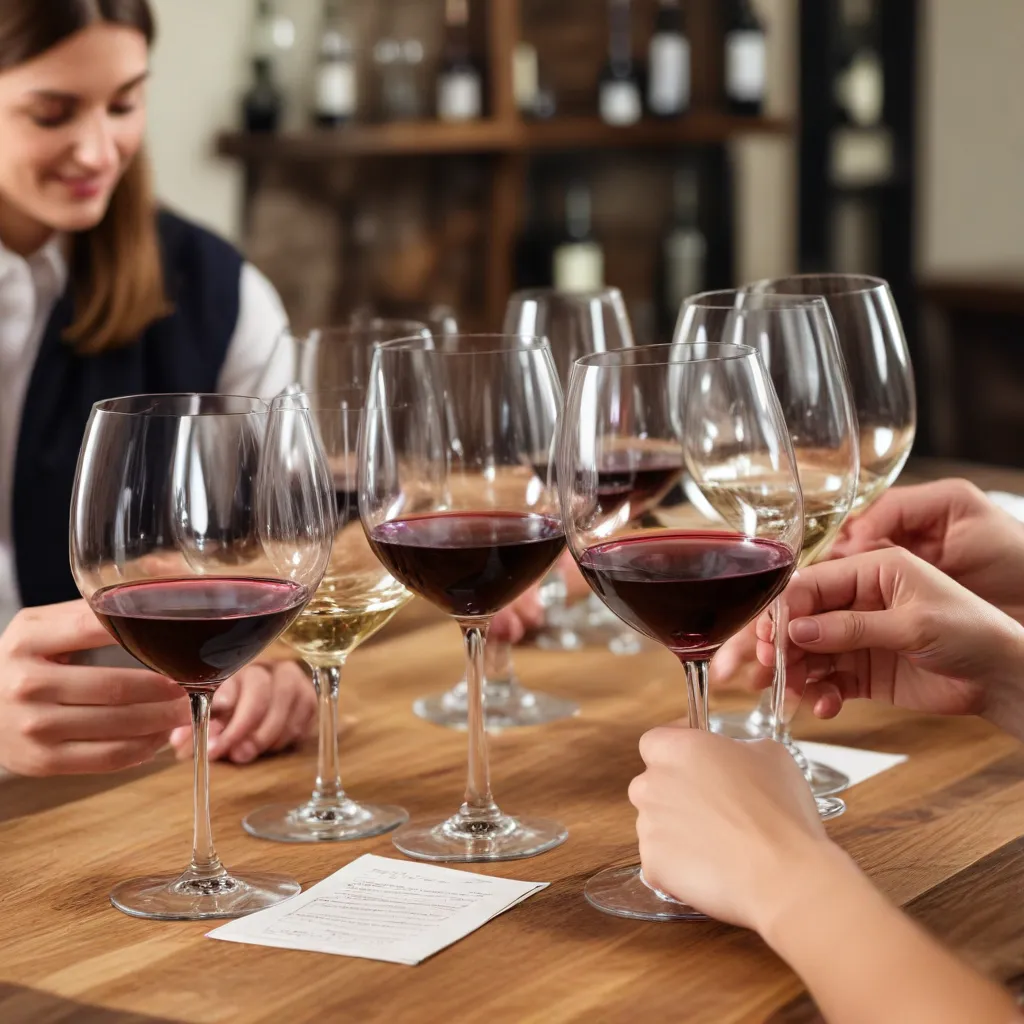
The world of wine is a captivating realm, brimming with nuanced flavors, captivating aromas, and a rich history. Whether you’re a novice or a seasoned enthusiast, mastering the art of wine tasting can unlock a deeper appreciation for this timeless beverage. By understanding the fundamentals of sensory evaluation, you’ll embark on a journey that transcends mere sipping and delves into the very essence of the wine in your glass.
The Sensory Experience
Wine tasting is a multifaceted endeavor that engages your senses – sight, smell, and taste. Each step in this sensory exploration offers valuable insights into the wine’s origins, vintage, and winemaking prowess.
Sight: Evaluating Color and Clarity
The visual examination of wine sets the stage for the tasting experience. Hold your glass against a neutral background and observe the wine’s color and clarity. From pale straw to deep crimson, the hue can reveal clues about the grape variety, aging, and winemaking techniques. Younger white wines may exhibit greenish tints, while mature red wines can showcase brick-like tones. By honing your observation skills, you can gain valuable information before even taking the first sip.
Smell: Identifying Aromas and Bouquet
The act of swirling the wine in your glass serves a crucial purpose – it oxygenates the liquid, allowing the volatile compounds to evaporate and release their captivating aromas. Bring the glass to your nose and inhale deeply, allowing the wine’s bouquet to unfold. From ripe berries to delicate floral notes, each wine possesses a unique aromatic profile that reflects the grape varietals, terroir, and winemaking practices. Swirl the wine again if needed, as the aromas may evolve with exposure to air.
Taste: Detecting Flavors and Textures
The moment of truth arrives as you take a small sip of the wine and let it linger on your palate. Pay close attention to the wine’s texture, acidity, and tannins as they interact with your taste buds. Is it light and crisp, or rich and velvety? Does it leave a lingering finish, with flavors persisting on your tongue? Observe the balance between sweetness, acidity, and bitterness, which defines the wine’s overall structure. Allow yourself to savor each sip, exploring the nuances and complexities that unfold.
Developing Your Palate
Mastering the art of wine tasting is an ongoing journey, and the more you practice, the more refined your palate will become. Embrace these techniques to deepen your understanding and appreciation for the world of wine.
Tasting Techniques
Develop a consistent approach to tasting. Follow the 5 S’s: See, Swirl, Sniff, Sip, and Savor. This methodical process enables you to fully engage with the wine, extracting every detail and nuance.
Flavor Profiles and Characteristics
Familiarize yourself with the common flavor descriptors used in wine tasting, such as fruity, floral, oaky, or spicy. This wine vocabulary will empower you to articulate your impressions and engage in more meaningful discussions with fellow enthusiasts.
Identifying Taste Sensations
Train your palate to discern the various taste components in wine, including sweetness, acidity, tannins, and body. Understanding how these elements interact and contribute to the overall balance of the wine will enhance your evaluation skills.
Enhancing Your Senses
Creating the right environment and utilizing the proper tools can further elevate your wine tasting experience.
Environmental Factors
Ensure that the tasting environment is conducive to focus and concentration. Minimize distractions, and consider factors like lighting, temperature, and background noise, as they can influence your ability to perceive the wine’s nuances.
Glassware and Stemware
The type of glass you use can have a significant impact on the wine’s aroma and flavor. Opt for wine-appropriate glassware that allows for optimal swirling and oxygenation, enhancing the overall tasting experience.
Pairing Food and Wine
Discover the art of food and wine pairing, where the interplay of flavors and textures can create harmonious or contrasting sensations. Explore how different dishes can either complement or accentuate the characteristics of the wine, elevating the overall dining experience.
Exploring Wine Varietals
The world of wine is vast and diverse, with each region and grape variety offering its own unique signatures. Embark on a journey to uncover the stories and nuances behind the wines you taste.
Classic Wine Regions
From the rolling vineyards of Bordeaux to the sun-drenched hills of Tuscany, each prominent wine region has a distinct history, climate, and terroir that shapes the character of its wines. Familiarize yourself with the renowned wine-producing areas and their signature styles.
Grape Varietals and Styles
Delve into the diverse world of grape varieties, from the bold and structured Cabernet Sauvignon to the crisp and refreshing Sauvignon Blanc. Understand how different grape types, winemaking techniques, and aging processes contribute to the vast array of wine styles.
Trends and Innovations
The wine industry is constantly evolving, with new and exciting developments in grape growing, fermentation, and maturation processes. Keep an eye on emerging trends, such as the rise of natural and biodynamic wines, that are shaping the future of the wine landscape.
As you embark on your wine tasting journey, remember to approach it with an open mind and a sense of adventure. Embrace the opportunity to explore, experiment, and refine your palate. Whether you’re sipping a bold red, a crisp white, or a sparkling delight, each wine offers a unique story waiting to be discovered. Dive in, savor the experience, and let your senses guide you on this captivating adventure. For more wine-related content and insights, be sure to visit www.winegardeninn.com.
